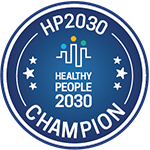
- Health service appointments: 770.904.3717
- WIC appointments: 770.513.9738
- Buford Center : 770.614.2401
- Centerville Center: 770.962.4295
- Lawrenceville Center : 770.904.3717
- Norcross Center : 770.638.5700
- Newton Center : 770.786.9086
- Rockdale Center : 770.785.4345
Scoliosis Screenings
Has your child been referred to the health department for additional scoliosis screenings?
Please call one of our conveniently located health centers to arrange for your child’s screening. Your primary care physician may also provide this scoliosis screening, if you prefer.
DIAGNOSE
What is scoliosis?
Scoliosis is a sideways curve of the spine. The curve can make the spine look like an “s” or a “c” rather than a straight line when viewed from the back. An x-ray of the spine is needed to determine if the condition has developed. Scoliosis is defined as a curve of 11 degrees or more.
Although scoliosis can develop at any age, the majority of the cases happen during adolescence, when most children are growing rapidly.
As the spine grows, it bends to the side and may twist or rotate. Since ribs are attached to the spine, they can rotate and make the chest look uneven. This twisting can also make the shoulders or waist look uneven. Girls and boys seem to be affected equally with smaller curves, but it is seven to eight times more likely a curve will progress in girls than boys.
Common signs of scoliosis include:
- Uneven shoulders and shoulder blades
- Unequal distance between arms and body
- Uneven hips
- Ribs prominence, or ribs that stick out in one area
- Lower back muscle prominence, or muscles that bulge on one side
- Uneven waist folds
Scoliosis is not always painful. Your child may not have pain at all, especially if the curve is mild or moderate. If your child has constant back pain, contact his doctor.
About 2 to 3 percent of children have scoliosis. The cause is usually not known. Most children will not have harmful long-term effects, but some will develop serious problems later in life if not treated. A curve in the spine may get worse during the adolescent growth spurt. Once a child is fully grown, a mild curve usually will not get worse.
Untreated scoliosis can cause:
- Severe physical deformity
- Chronic back pain
- Osteoarthritis
- Heart problems
- Lung problems
Severe cases of scoliosis can cause:
- Curves in the spine that continue to get worse during adult life
- Heart problems
- Lung problems
If you think your child may have scoliosis, act now. Early detection and treatment can save your child from a lifetime of pain and other issues.
How we identify scoliosis
Scoliosis is usually noticed during routine health exams or as part of a school’s screening program. Your child’s primary care provider should screen for scoliosis at the child’s annual well checkup. Adolescents should be screened between the ages of 10 and 15. Georgia public schools offer free screenings during the middle school years. If a screening shows signs of scoliosis in your child, you will be notified.
Screening is simple and painless, and only takes about a minute. It only detects possible scoliosis, not other back problems. Occasionally an x-ray is required to more clearly identify a curve and confirm the diagnosis of scoliosis.
Be prepared:
- A female child should wear a sports bra or a bra without underwire. These bras can be left on during the examination. This also makes it easier for the doctor to read the radiographs.
- Bring shorts. Shorts will be worn during the exam. Paper shorts can be provided by our staff, but most patients feel more comfortable in their own athletic shorts.
Possible causes
Most of the time, no one knows what causes scoliosis. It occurs in healthy children, and the condition may be inherited.
There are several types of scoliosis:
- Congenital: The bones in the spine did not form correctly before the child was born.
- Neuromuscular: This type is related to problems with the nervous system or muscles, such as cerebral palsy, spina bifida and muscular dystrophy.
- Mechanical: This occurs when a child has a leg length difference. This condition is treated differently than scoliosis.
- Idiopathic: This type is the most common and develops in children with otherwise healthy bones. No reason is known. There are three types:
- Infantile: This form usually occurs in children under the age of four.
- Juvenile: This form occurs between ages 4 to 10.
- Adolescent: This form occurs between ages 11 to 18. It is the most common type of scoliosis.
TAKE ACTION
Steps to get help
A positive scoliosis screening does not mean that your child has scoliosis and will need treatment. It simply means that you should get your child checked by his primary care provider or at a Children’s clinic.
If your child has scoliosis, your doctor will help decide on the next steps. It is important for your child to be evaluated early so you have the most treatment choices. Scoliosis will not prevent your child from doing his regular activities or sports. Finding a curve in the spine early allows for more treatment options.
1. Contact your child’s pediatrician or set up an appointment with Children’s Scoliosis Screening Program
- Find a doctor
- Learn more about our scoliosis screening clinic
- Schedule a scoliosis screening clinic appointment by calling one of our clinics
2.Take action
If your child has scoliosis, your doctor will help determine the next steps.
- Some children and teens require a follow-up recheck at six months or one year
- A few children and teens may need medical treatment such as bracing or surgery
- Your child can continue his sports or activities unless the doctor says to stop
3. Set up an appointment with a specialist
Your child’s doctor or our scoliosis screening staff can tell you if your child needs to see an orthopaedic surgeon.
TREAT
Your child’s treatment will depend on the kind of scoliosis, size of the curve and how much he is likely to grow. The goal of treatment is to decrease the progression. Small curves in children at skeletal maturity have a very low risk of progression, while fairly large curves in skeletally immature patients have the highest risk of progression.
Treatments may include:
- Observation and rechecks
- Bracing
- Surgery
- Physical Therapy
Information provided by Children’s Healthcare of Atlanta (CHOA)
For additional information regarding scoliosis, visit the Children’s Healthcare of Atlanta scoliosis page by clicking HERE.
- Health service appointments: 770.904.3717
- WIC appointments: 770.513.9738
- Buford Center : 770.614.2401
- Centerville Center: 770.962.4295
- Lawrenceville Center : 770.904.3717
- Norcross Center : 770.638.5700
- Newton Center : 770.786.9086
- Rockdale Center : 770.785.4345


